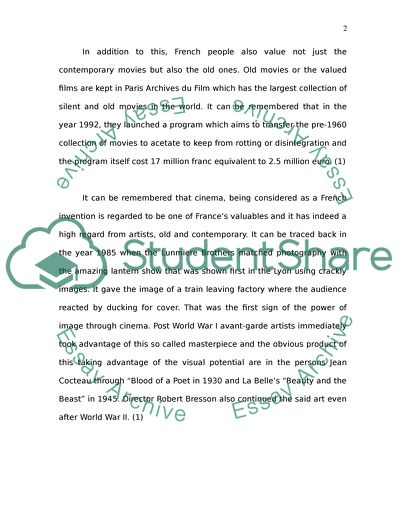Cite this document
(French New Wave: A Different Trend of Cinematography Essay Example | Topics and Well Written Essays - 1250 words, n.d.)
French New Wave: A Different Trend of Cinematography Essay Example | Topics and Well Written Essays - 1250 words. https://studentshare.org/visual-arts-film-studies/1533917-an-indepth-study-of-themes-and-motifs-notable-directors-and-key-players-in-french-new-wave-movement
French New Wave: A Different Trend of Cinematography Essay Example | Topics and Well Written Essays - 1250 words. https://studentshare.org/visual-arts-film-studies/1533917-an-indepth-study-of-themes-and-motifs-notable-directors-and-key-players-in-french-new-wave-movement
(French New Wave: A Different Trend of Cinematography Essay Example | Topics and Well Written Essays - 1250 Words)
French New Wave: A Different Trend of Cinematography Essay Example | Topics and Well Written Essays - 1250 Words. https://studentshare.org/visual-arts-film-studies/1533917-an-indepth-study-of-themes-and-motifs-notable-directors-and-key-players-in-french-new-wave-movement.
French New Wave: A Different Trend of Cinematography Essay Example | Topics and Well Written Essays - 1250 Words. https://studentshare.org/visual-arts-film-studies/1533917-an-indepth-study-of-themes-and-motifs-notable-directors-and-key-players-in-french-new-wave-movement.
“French New Wave: A Different Trend of Cinematography Essay Example | Topics and Well Written Essays - 1250 Words”. https://studentshare.org/visual-arts-film-studies/1533917-an-indepth-study-of-themes-and-motifs-notable-directors-and-key-players-in-french-new-wave-movement.


